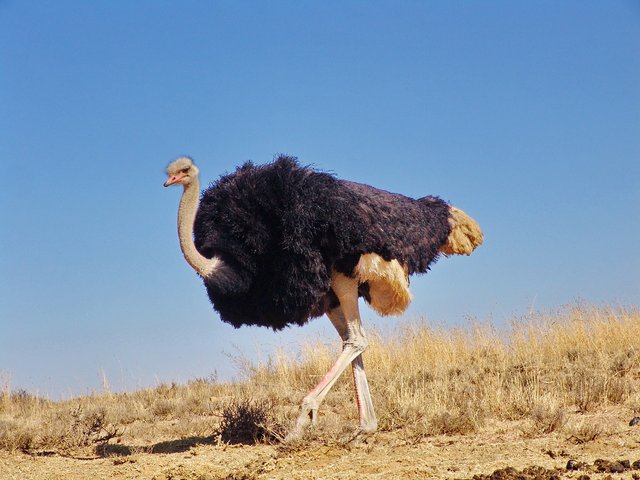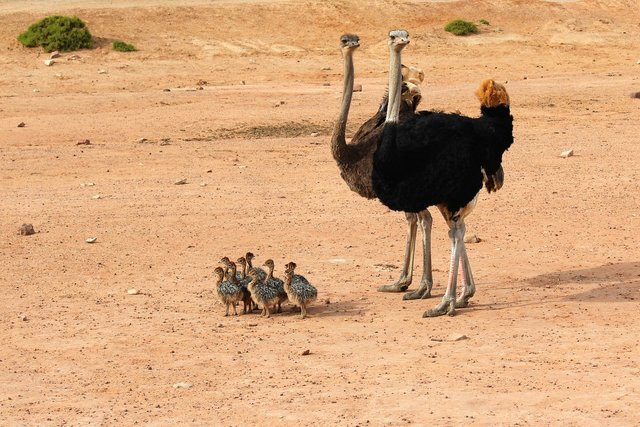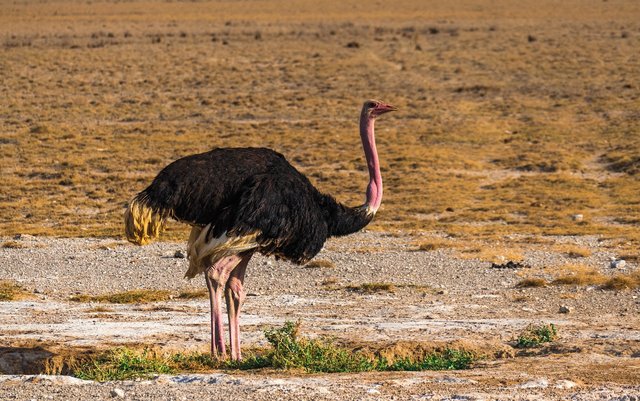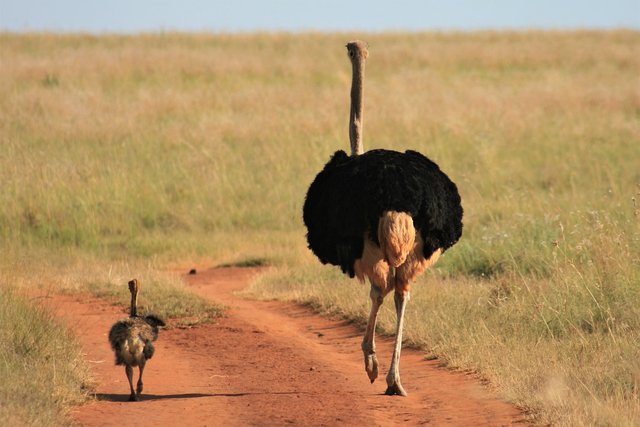
Ostriches: Miracles in the Desert
The ostrich, with its unique appearance and amazing adaptation to the harsh desert environment, is one of the most fascinating creatures on earth. Known for their striking height, long necks, and ability to adapt to extreme environmental conditions, ostriches provide many interesting lessons about evolution, courage, and endurance.
Physical Characteristics and Habitat
The ostrich (Struthio camelus) is a member of the Struthionidae family and is the largest bird in the world today. They can reach a height of about 2.5 meters and weigh more than 100 kilograms. Unlike other birds that have strong wings, ostriches have small wings that are almost invisible, but their long and strong legs allow them to run at speeds of up to 70 kilometers per hour. These adaptations make them well suited to living in the vast deserts and open grasslands of Africa.
Ostriches have long necks that make it easier for them to reach high foliage and also serve as a cooling mechanism in hot weather. Their fur is gray or brown in color, which helps in matching the color of the desert sand and provides protection from the harsh rays of the sun.

Amazing Adaptation
One of the most amazing adaptations of the ostrich is its ability to survive without water for long periods. They can drink large amounts of water when it is available, and can then survive for days or even weeks without water by relying on the water they obtain from the plants they eat and their efficient metabolism.
Additionally, their eyes are very large and can see clearly in low light conditions, allowing them to avoid danger and hunt for food at night. Ostriches are omnivores, although most of their food consists of plants such as grass, leaves and fruit, they also do not hesitate to eat insects or small animals that they encounter.

Role in Ecosystems and Conservation
Ostriches play an important role in the desert ecosystems where they live. As large herbivores, they help regulate certain plant populations and influence the structure of vegetation in the areas they visit. Apart from that, they are also a food source for predators such as lions, hyenas and humans.
However, like many other species around the world, ostriches face threats to their survival. Illegal hunting for their meat, fur and eggs has reduced their populations significantly in some areas, although conservation measures have been taken to protect them.

Uniqueness and Importance in Human Culture
Ostriches have long been a subject of curiosity and awe for humans. They appear frequently in African mythology and folklore, where they are valued for their strength, endurance, and beauty. In addition, ostriches also have significant economic value in some communities, both as a source of meat and eggs, and as a tourist attraction.
In conclusion, ostriches are one of the most amazing examples of extraordinary evolutionary adaptation to harsh environments. With their ability to survive in hot and dry deserts, ostriches are not only an important part of the ecosystem, but also a source of inspiration for humans in understanding the wonders of nature. Protecting these species is an obligation for all of us to ensure that their beauty can be enjoyed by future generations.
Downvoting a post can decrease pending rewards and make it less visible. Common reasons:
Submit
Upvoted. Thank You for sending some of your rewards to @null. It will make Steem stronger.
Downvoting a post can decrease pending rewards and make it less visible. Common reasons:
Submit